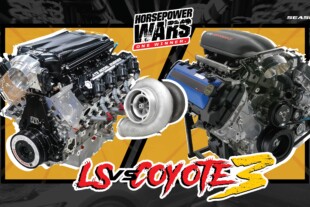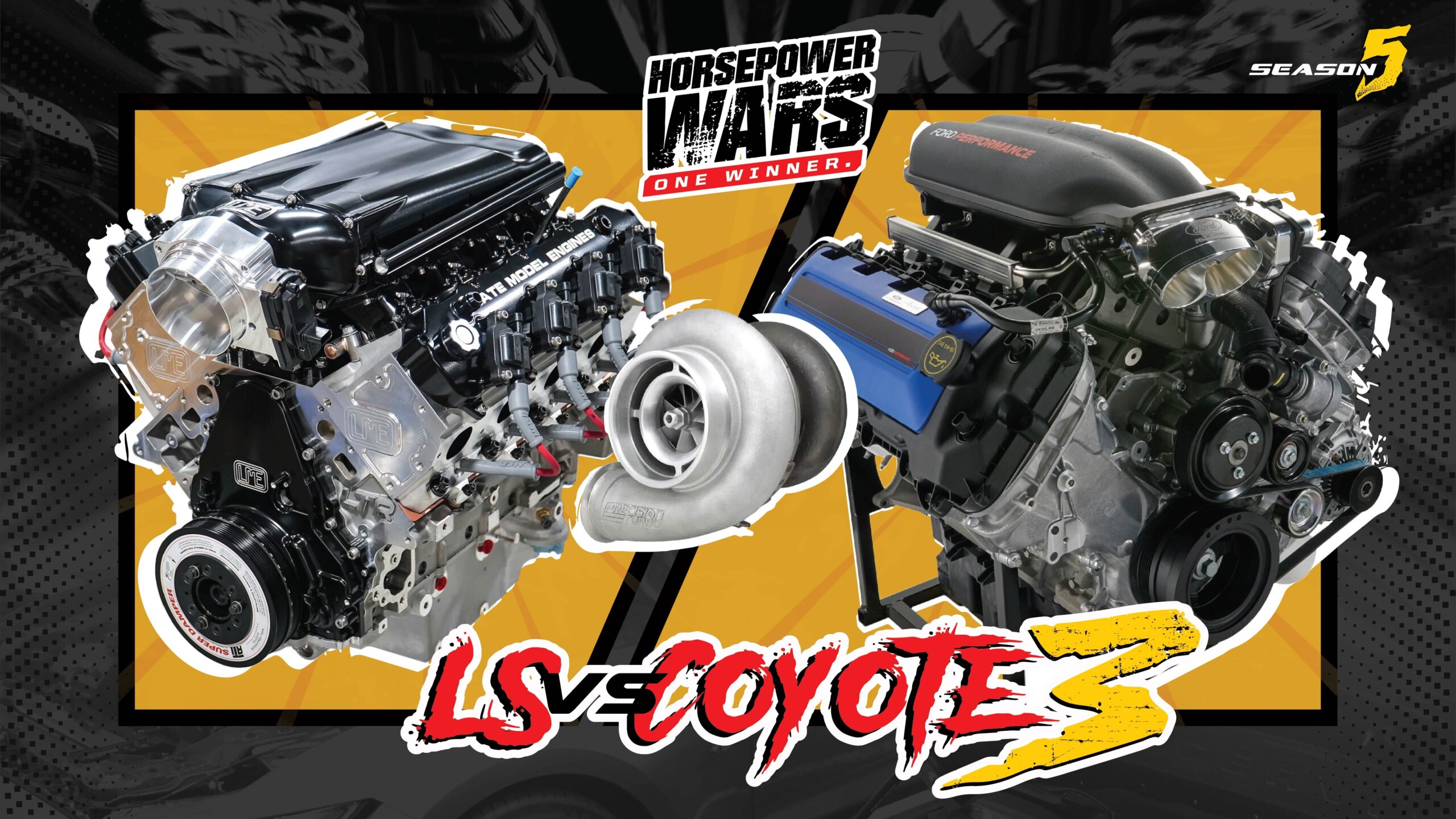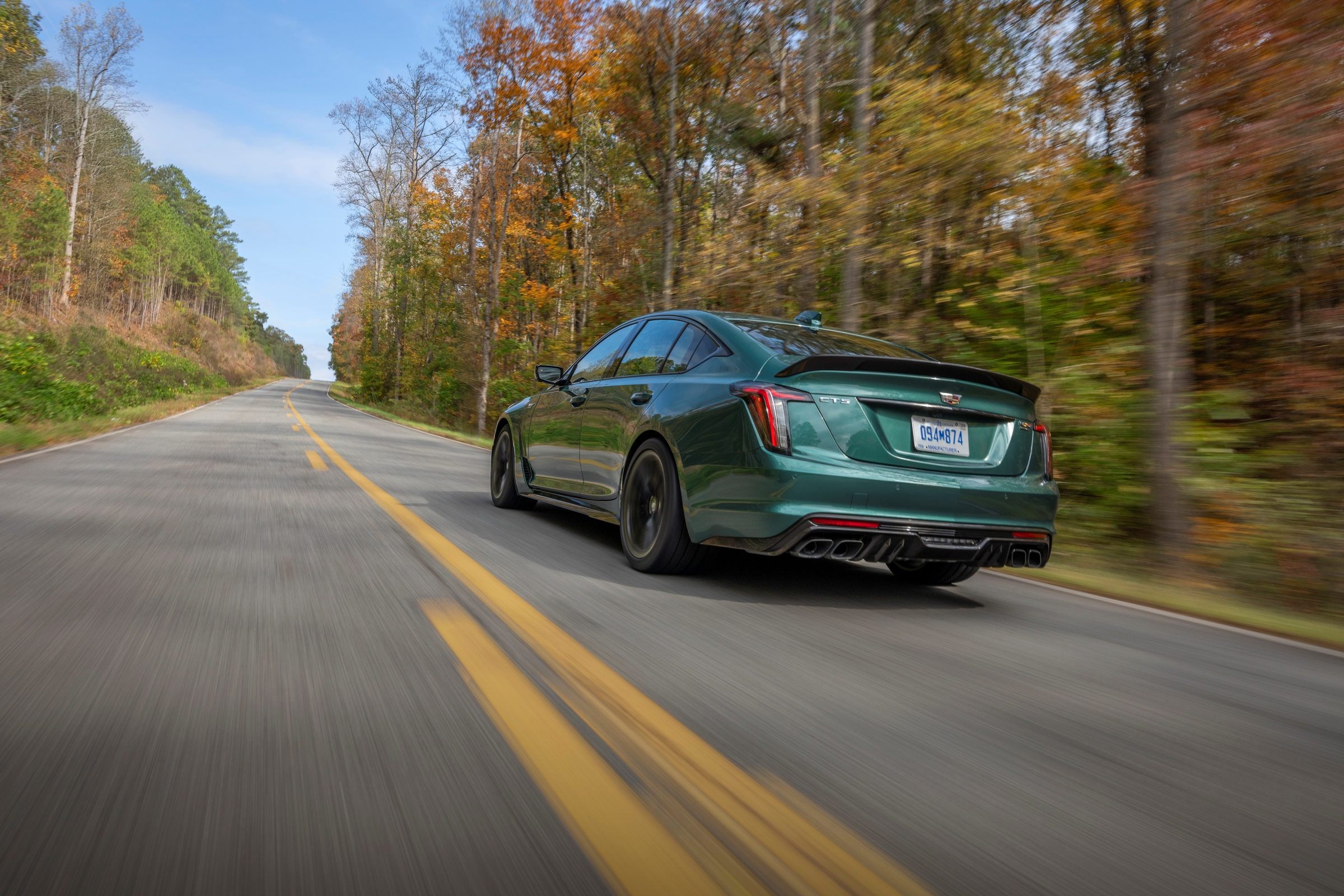Welcome back to Project Track Addict. Since our last update, we’ve been busy in the shop installing more upgrades to transform our C8 Corvette from a factory sports car into a track-day terror. Up to now, we increased the car’s performance considerably by adding high-performance wheels, tires, and brakes. In this update, we are installing new suspension components and an aero package that adds downforce and gives Track Addict an aggressive appearance. Once we have the suspension and aero package installed we’ll return to Willow Springs International Raceway where our pro driver, Allen Ward, will seek to improve his personal best lap time in the C8.

Project Track Addict has come a long way and we’re not done yet. We are installing more upgrades in the search for quicker lap times.
We’ve covered Ward’s background in previous Project Track Addict updates, and his experience, knowledge, and driving capabilities are worth another mention. With 15 years of experience racing superbikes with the Willow Springs Motorcycle Club and WERA West organizations, Ward knows every crack, bump, and square foot of the Willow Springs race track. Additionally, he’s spent the past 13 years with GMG Racing and currently serves as the team’s manager, as well as one of its driving instructors. Ward is also a four-time Porsche Club of America champion in the CC16 class. Having him onboard this project as the test pilot and performing all of the testing at Willow Springs is the ideal scenario to get the best lap times possible out of Track Addict.

In phase one of the project we upgraded to a set of Forgeline SS1-R wheels and Continental ExtremeForce tires. We also installed a set of Forgeline street wheels (pictured on the car).
To recap everything we’ve done to the C8 so far, phase one of Project Track Addict began with preparing the C8 for all the upcoming track test sessions. We installed a C8-specific harness bar from Peitz Performance with mounting points for the Sparco harnesses to keep the driver and passenger securely in place. Additionally, we installed stronger axle bolts from Cicio Performance and upgraded the transmission filter and filler tube with components from Dodson Motorsports. The highlight of phase one came when we pulled the factory wheels and tires off in favor of lightweight Forgeline SS1-R wheels wrapped in Continental ExtremeContact Force tires. Jumping into phase two, we installed and tested the Alcon Pro Series brake package sourced from Lingenfelter Performance Engineering along with HAWK track-focused brake pads for the front and rear. See the full story on this upgrade here.
In the first part of phase two we intalled bigger better brakes from Alcon. Their Pro System brake package looks great and allowed Ward to drive harder and deeper into the turns during testing without any fading or degredation of braking performance.
To complete phase two, we are installing new track-focused coilovers along with front and rear aero components. The goal of these modifications is to maximize the C8’s handling abilities by making the car more planted to the track’s surface at speed. The new coilover suspension will soak up any bumps and rough spots, and the aero package will greatly increase the downforce on the car, helping it stick to the road. “Big Willow is a tough track to master,” Ward says. “With the stock suspension, bumps in the course upset the car, particularly in the high-speed turns like turn eight.”

The double-adjustable coilovers from MCS are a leap in performance on the race track. According to Ward, our C8 behaved like a different animal.
To combat the bumps on the track we reached out to Cicio Performance to get an expert recommendation for a track-focused coilover setup that we could dial in for hard track day use and street driving. The team at Cicio steered us in the direction of Motion Control Suspension (MCS). MCS has a 28-plus-year history of developing, prototyping, and manufacturing high-performance motorsports dampening systems at its facility in Atlanta, Georgia. The company is extensively involved in the highest levels of GT and Touring Car racing worldwide.
One of the standout aspects of Cicio’s Trackday Suspension is the personalized approach to customer service. While MCS Performance does not sell directly to consumers, they are committed to guiding clients to the appropriate dealers within the MCS network. Wyatt Gilbert, Account Representative for Cicio Performance, explained this approach. “Our dampers are a tailored solution, and you choose what range you want to be in,” Gilbert explains. “The dampers are scalable with the spring rates, offering a good ride versus a hard ride but better handling.” This commitment to customization ensures that each driver gets a suspension setup that perfectly matches their driving style and requirements.
For Project Track Addict, we chose to run the MCS two-way adjustable coilovers in the front and rear. The MCS coilovers are a direct bolt-in replacement for the factory C8 coilovers. We chose the non-remote reservoir dampers for their easier packaging and installation. Each damper features individual rebound and compression adjustments that will allow us to dial in the suspension to the track surface conditions.
At the heart of the Trackday Suspension are 1,120-pound-per-inch springs. These springs provide an effective rate of 660 lb/in. At the rear, the effective rate is a robust 836 lb/in. This combination ensures that our C8 maintains optimal grip and stability at speed, delivering the performance at the track. However, despite the high-performance credentials, the springs are on the softer side, balancing comfort and performance. This means that even with a track-focused setup, the suspension remains compliant enough for daily driving, ensuring we don’t sacrifice comfort for capability.
The new adjustable coilovers from MCS offer better dampening performance and the stiffer springs we installed on them will help with the increased downforce from the LG Motorsports aero package.
Once the coilover installation was complete, the wheels were reinstalled and the lug nuts were torqued we could double-check the alignment. For track days, the alignment on our C8 is set up following GM’s Specialty Vehicle Track Preparation alignment settings. To achieve these recommended settings, the washers between the body and the upper control arm at each corner of the car need to be relocated between the head of the bolt and the upper control arm. You can see the complete GM Specialty Vehicle Track Preparation guide here. Additionally, the removal of the factory MagnaRide coilovers required we install electronic emulator modules to keep the system from throwing error codes. We installed the Electronic Dampening Cancellation Kit from KW Suspensions.
GM Specialty Vehicle C8 Corvette Track Alignment Settings
Front (Per Corner)
Caster: 8.0 degrees
Camber: -3.0 degrees
Toe (total): 0.1 degrees toe in
Rear (Per Corner)
Caster: 0.0 degrees
Camber: -2.5 degrees
Toe (total): 0.1 degrees toe in
With the suspension upgrade finished, we then focused our attention on the part of this build that makes the most visual impact on Track Addict, the aero package. To create more track-hugging downforce, we went to LG Motorsports, a company that knows more than a few things about aero components, Corvettes, and GT racing. LG has been a source of high-performance Corvette components for over 35 years. They have developed parts for race cars in the Corvette Challenge Series, Trans Am, Grand Am Series, World Challenge, and the American Le Mans GT2 class.
The LG Motorsports GT2 tunneled splitter increases downforce on the front of the C8 to balance the downforce from the rear wing.
For the C8 Corvette, LG offers its carbon fiber GT2 Tunneled Splitter and GT2 Wing. According to LG, this aero package is aggressive and can greatly increase the downforce on the car to the point that a stiffer coil spring may be needed depending on the speed of the track. Additionally, LG recommends the front splitter and rear wing be used together to keep the car balanced and settled at speed.
Our development is done at the race track rather than in simulations. So for us, the downforce data is that the car was six seconds faster at Circuit of the Americas – Sergio De La Torre, LG Motorsports
“The factory splitters tend to have a slight tilt up. Rather than extend a splitter based off of that angle, the first thing we do is to correct the angle so that the splitter is level with the floor of the car,” De La Torre explains. “Typically we would add large tunnels but the coolers on our Z51 left very little space in that area. So, we opted to keep it flat. The lack of tunnels ended up being a nonissue because the C8 performed better with more rake than previous generations. The rear wing setup is pretty straight forward. Just attach our GT2 profile wing to the car in a way that will meet SCCA rules and then dial angle to match the splitter.”
The LG Motorsports GT2 wing has an aggressive look and is adjustable to increase or decrease downforce.
To begin the installation of the rear wing, the interior panels under the rear engine hatch must be removed to clear the area for mounting the uprights. That’s right, the GT2 wing mounts to the frame of the C8, and the pylons extend through the engine hatch. If the thought of taking a body saw to your Corvette makes you cringe and break out in a mild cold sweat, then a different wing is probably for you. However, if you’re like us and want all the downforce in the quest for quicker lap times then keep reading.
Marking, cutting, and removing the hard composite material is time consuming but is essential to properly installing the rear wing to the metal frame.
Our resident tech, Seth Ward, had no problems making surgeon-like cuts to Track Addict’s hatch to make room for the GT2 wing. Each pylon is mounted to the car’s frame using five bolts. With the interior panels and carpet removed, you mark and drill the mounting holes and mark the footprint of each pylon. Before the pylons can be bolted to the car, a layer of hard composite material must be removed so the pylons are mated directly to the metal chassis. A small cut-off wheel and a chisel are very helpful for this part of the installation.

Carefully taping off the area to be cut for the pylons will help keep the paint from chipping. It also makes a good surface to mark the length and width of the cuts.
With the composite material removed, Seth was able to clean up the metal mounting area, give it a quick coat of paint, and bolt down the pylons. Notching the engine hatch is a simple process, provided care is taken to accurately tape off, measure, and mark where the slots need to be to clear the pylons and allow the hatch to shut completely. Once the notches are cut and the edges are cleaned up, the final step is mounting the wing to the pylons at the desired angle of attack using the included quick-connect pins.
Moving to the front of the car, mounting the carbon fiber front splitter is a straightforward installation. After removing the factory splitter, simply mark and drill the additional holes for the GT2 splitter and install nutserts in the holes. The next step is holding the GT2 splitter in place and securing it to the car with six screws. The new splitter looks just as aggressive as the big GT2 rear wing and will balance the downforce on the front of the car with the rear.
After installing the MCS coilovers and LG aero package, Project Track Addict went back on the scales to get ready for its return to Willow Springs.
Before we took Track Addict back to Willow Springs to find out if we improved our lap times, it needed to be set on the scales to double-check the corner weights and make sure the car was balanced. Using Intercomp‘s E-Z Weigh Scales we were able to improve the car’s balance with only minor adjustments.
Returning to Willow Springs for a third track day, we had good weather and good course conditions. Ward hit the track ready to set a personal best in the C8 and really push the car to find its new limits. “It was a night and day difference with the new suspension [and aero],” Ward says. “The car feels planted when hitting bumps and has much less body roll through the turns. Turn eight is really bumpy, and after the initial session, the guys added two clicks of rebound to the rear shocks and we never had to adjust them again.”
In addition to Ward’s positive reaction to the new coilovers, he was just as impressed with the LG GT2 wing and splitter. “With the aero on the car, it begins to work and be noticeable at about 80mph and above,” Ward explains. “The aero makes the car feel really planted through the high-speed sections of the track, like turns eight and nine. Before we added the aero, the rear of the car was not happy through those turns and would wiggle. The rear wing helps a lot, and now I’m going through Turn 8 wide open between 130 and 140mph.”

Project Track Addict has become a fun track day car and we have more in store for it. In the last phase of the project we will upgrade the engine with several components and get the C8 tuned on a chassis dyno.
The results of the phase-two upgrades speak for themselves. On the Garmin Catalyst, Ward recorded a new personal best lap time of 1:31.57 during the last session of the day. That’s more than five seconds better than the previous best time of 1:36.94. Additionally, almost every lap of the day across five sessions was quicker than the previous best time. “That’s really fast for a [3,500 pound] street-legal car,” Ward says.
This C8 is one of the most fun cars I’ve driven. — Allen Ward
At this point, Ward believes Project Track Addict is nearing the limits of its current 200 treadwear tires. “The aero, suspension, and brakes allow me to carry so much more speed into the corners on a fast track like Big Willow that the tires are screeching and on the verge of losing traction in many turns,” Ward explains. “The Continental tires have been great throughout the testing, but to go quicker, the next step would be to a softer DOT race tire.”
With a successful track day complete, Track Addict is heading back to the garage, where it will undergo the final phase of this project. For phase three, Project Track Addict is getting a boost in the horsepower department thanks to several components from Lingenfelter Performance Engineering. Once Seth has the parts installed, we’ll strap the C8 onto a chassis dyno and have one of the industry’s leaders in tuning GM vehicles, Mike Carnahan of Elite Tuned School, connect remotely and get Track Addict’s tune dialed in. Stay tuned to LSX Magazine for the next update on this track day terror.






























